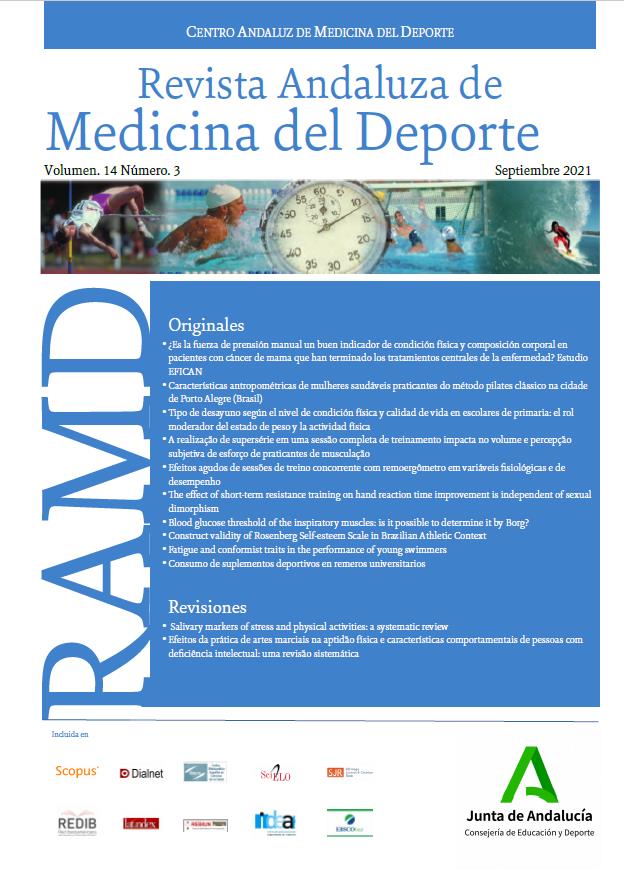The effect of short-term resistance training on hand reaction time improvement is independent of sexual dimorphism
Abstract
Objectiveː The aim was to evaluate the effects of four weeks of resistance training and sexual dimorphism on Manual reaction time in apparently healthy subjects.
Methods: The subjects of the sample were randomly allocated in two groups, as follow: Control (CTRL) - kept 4 weeks without any systematized physical activity (Nmales= 8, age= 24±3 yrs., body weight= 76.9±15.4 kg; Nfemales= 8, age= 22.5±4 yrs., body weight= 70.8±17.5 kg); Experimental (EXP) - 4 weeks of resistance training (Nmales= 8, age= 23±3 yrs., weight= 69.6±11 kg; Nfemales= 8, age= 22.5±1 yrs., body weight= 59.77±6.8 kg). The resistance training consisted of 4 exercises for upper limbs (3 sets x 8-12 reps) and 4 exercises for lower (3 sets x 12-15 reps). Manual reaction time was evaluated in a manufactured Arduino-based reaction time device connected to a computer.
Results: For men, there was a significant decrease in Manual reaction time after resistance training within EXP (p<0.0001) and between groups (p<0.0001). Women showed the same results within EXP (p<0.0001) and between groups (p<0.0001). Additionally, there was no sexual dimorphism before or after four weeks of resistance training.
Conclusion: The results suggest that just four weeks of resistance training was sufficient to improve Manual reaction time, regardless of sexual dimorphism. Therefore, resistance training inclusion in the training periodization seems essential to improve or rehabilitate the fast voluntary motor response, especially for activities or sports that require it.


